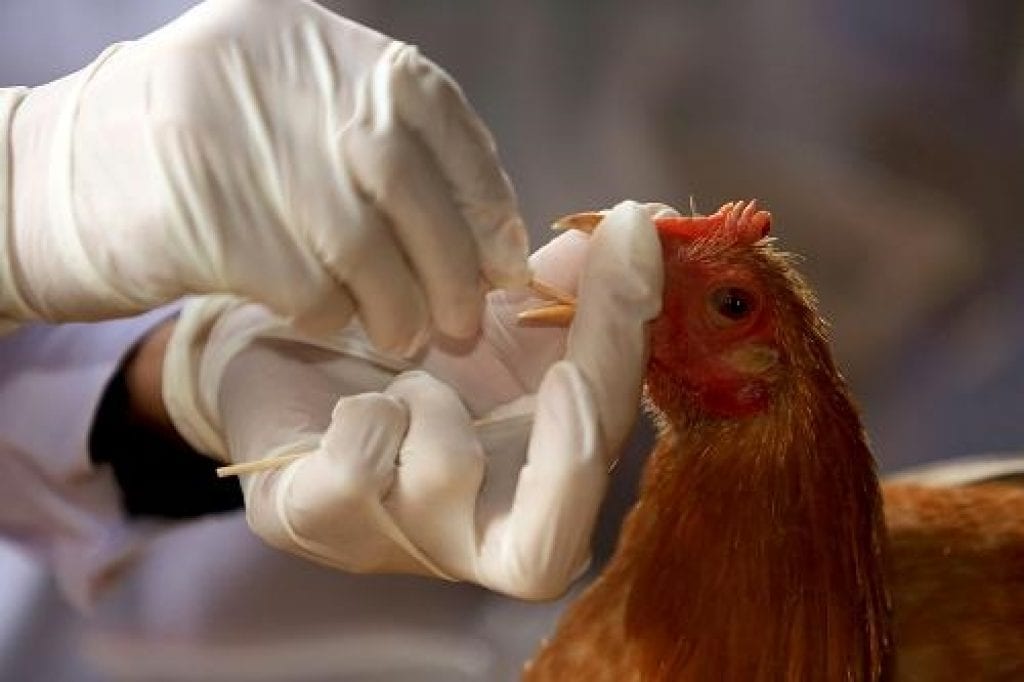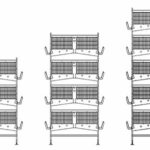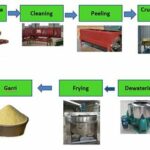Layers are poultry birds reared for table egg production in poultry farming, and in commercial egg production, every poultry farmer expects to obtain an optimum yield of eggs from layers. When this expectation falls short, it becomes a source of concern because a decline in egg production can be one of the first signs of a problem on the farm.
Usually, the laying cycle of layers covers 12 months, and they lay eggs commercially from 18-19 weeks of age until their 72-78 weeks of age. Their production reaches a peak of about 90 per cent in the sixth or eighth week from the day they started laying and then declines to about 65 per cent after their laying cycle.
However, there are some instances where farmers have witnessed their layers suddenly dropping their egg production to even less than 40 per cent before the 12 months laying period. Therefore, unravelling the cause of a sudden drop in egg production requires a thorough assessment of the birds by the poultry farmer, as there are checkpoints that often identify the specific cause for low egg production in a poultry farm.
Factors That Cause Low Egg Production in Laying Hen
Poor Quality Feed and Water Consumption
Layers cannot produce eggs optimally without a proper and balanced diet because to be healthy and productive, they require adequate nutrients in the right form daily. Hence, to ensure optimal egg production and maintain egg quality, feed the birds with feed made from high-quality raw materials and proper feed formulation according to the age of the birds. Do not feed them mouldy feeds and avoid too much feed in feeders. Check the feed for rodents and wild bird infestation.
Also, some drugs are poorly soluble in hard water and can deduce the efficacy of vaccines. Always provide clean and fresh water for the birds, as unclean water could cause lower egg production. Sanitize and clean pipelines and tanks with Hydrocare.
Decreased Exposure to Light
Egg production is affected by the length of exposure to daylight, as light trigger layers’ pituitary gland to produce eggs. Hence, laying hens should enjoy adequate lighting for at least 14-16 hours. This means that increased lighting stimulates egg production and decreased daylight hours can cause a drop in or stop to egg production.
To prevent this, provide artificial light to maintain a constant day length of at least 14 hours per day. Lights should be checked regularly so that they do not get dimmer. Also, layers should not be exposed to too much light, as they reach sexual maturity at an early stage and lay very small eggs.
Diseases and Parasite Infestation
Most times, one of the first symptoms of a disease is a decline in egg production. Diseases that result in a drop in egg production include Newcastle, Fowl Pox, Fowl Cholera, Coccidiosis, Bird Flu etc. Egg Drop Syndrome (EDS), which is caused by a viral infection in layers, is characterized by the production of soft-shelled and shell-less eggs in birds, leads to a sudden drop in egg production. Also, the infestation of Ector parasites like fowl mite, lice, and fleas, as well as endoparasites like roundworms, tapeworms, gape worms among others, could result in a drop in the production of eggs by layers.
To prevent this, ensure you follow a proper vaccination schedule and deworming programme. Deworm the birds monthly by using Kepromec Oral. Use Ectoblast for delousing and to handle flies in poultry. Manage your litter well to prevent diseases such as coccidiosis.

Also, follow good biosecurity measures and general sanitary precautions. However, if you suspect a disease, contact a skilled veterinarian to examine your flock and get an accurate diagnosis and treatment. Your best protection against disease is to buy healthy stock and keep them isolated from other birds. If you wish to increase your flock, buy chicks from a reputable hatchery or hatch some of your eggs.
Stress
A drop in egg production occurs when laying hens are stressed for any reason. For instance, most layers are usually affected by sudden changes in their usual pattern, such as a change of pen location or layout. Other stressors that can trigger egg production decline include being harassed by a predator at night, and severe weather including extreme cold or extreme heat. Therefore, poultry farmers should avoid handling or moving their birds as soon as they start laying eggs, and amend security lapses on the farm.
Moulting
Moulting is the natural process of feather shedding and re-growth. Hens divert protein and energy away from egg production to concentrate on feather growth. Poorer layers and older hens often moult more and lay less. Supplementing a hen’s diet with extra protein during a moult can aid in feather growth and egg production.
Faulty Cage Design
The improper slope of cage floor could result in egg breakage or egg-eating by birds. Also, space between the feeder and egg tray will allow eggs to roll out for birds to extend their neck and peck or break the egg.
Other management and environmental factors such as time of year, competency of farmworkers, debeaking, and predators consuming the eggs, egg-eating by hens in the flock, excessive egg breakage, could also affect egg production.
In summary, if a drop in egg production occurs in your layers, investigate the cause with the following checkpoints;
- What is the age of the birds?
- Is feed available to all birds?
- Has the level of feed consumption changed lately?
- Is the watering system properly and are the birds getting enough clean water?
- Do you adhere to biosecurity measures?
- What is the light source and how much light do the birds receive daily?
- What is the condition of the poultry house?
- Has shell strength and egg size changed?
- Are there any signs of disease?
- Was a proper vaccination schedule followed?
- Is mortality higher than normal?
- Was debeaking done at the right time and was it properly done?
- What’s the flock history? Do the same flock previously have the same or other problem?
With these checkpoints, you can easily recognize when a drop in egg production is caused by a problem that requires your attention and take the necessary measures to increase the production of eggs on your farm. Also, remember to consult with your veterinarian. As long as your layers have all they need to be healthy, they will produce as they should.
Dr Wageti
Adamore Nig. Ltd
Sole Distributor of Kepro products in Nigeria


















12 thoughts on “Layers Farming: 6 Easy Ways To Manage A Drop In Egg Production”
Very informative. Many do not know reasons for drop in egg production, but this has and will inform any who wish to learn put to good use.
Very educative, but some layers produce commercially beyond the twelve months period stated in this article.
I need the prices of broilers.
Dear Wilfred,
Thank you for reaching out to us
Here are the current prices of a carton of 50 day-old chicks:
NASTECH (Arbor Acres Plus) Broilers: NGN 23,500
FIDAN (Arbor Acres Plus) Broilers: NGN 22,500
Vertex (Arbor Acres Plus) NGN 23,000
CHI (Arbor Acre Plus) Broilers: NGN 23,500
SAYED Broilers: NGN 24,000
AMO (Arbor Acre Plus) Broilers: NGN 23,000
Zartech Broiler NGN 23,250
To place an order for these and a variety of others, kindly click the link below:
https://afrimash.com/vendors/chicks-hub/
You can also reach out to us via:
Call: (+234) 809 409 1115
WhatsApp: (234) 808 280 8271
Email: [email protected]
Where can I get my next batch of layer day old to buy and how much, I mean a good source.
2.how much is old layer sold currently?
Hello Adepeju,
Thank you for reaching out to us.
We offer a variety of quality day-old layers at the following prices per carton of 50 chicks;
ChicksHub IsaBrown Pullets (AMO): ₦19,500
ChicksHub Black Pullets: ₦17,000
Isa Brown pullets (CHI): ₦20, 000
ChicksHub Isa Brown Pullets (Zartech): ₦19, 500
Isa Brown pullets (Farm Support): ₦17,250
Chikun Pullets (Olam): ₦17,250
Kindly click the link below to place an order;
https://afrimash.com/product-category/livestock/poultry/day-old-chicks/pullets-layers/
Also, for old layers, the current price is ₦1,700.00 per bird. Kindly click the link for more information:
https://afrimash.com/shop/livestock/poultry/old-layers-isa-brown-spent-hen/
You can also contact us via any of the channels below:
Call: (+234) 809 409 1115
WhatsApp: (234) 808 280 8271
Email: [email protected]
Thank you for choosing Afrimash
Thanks ..how can I get point of lay and how much?
Hello Shalom,
Thank you for reaching out to us.
We offer 12 and 14 weeks point of lay for delivery nationwide and here are the current prices per bird;
12 weeks: N1,620
14 weeks: N1,720
Kindly click the link below to place an order now:
https://afrimash.com/shop/livestock/poultry/quality-point-of-lay-hens-isa-brown/
You can also reach out to us via any of these channels;
Call: (+234) 809 409 1115
WhatsApp: (234) 808 280 8271
We look forward to your order.
Well informed
Good morning sir, please our chicken just stop laying egg, from 13 crates of egg each day to now 1 crate and pieces.
Our chicken are 58 week now. Dey are very active and don’t eat much.
Please can I do
Hello Dickson,
Thank you for reaching out to us.
There are several factors that can cause a drop in egg production in layers. For proper diagnosis, we recommend you contact your veterinary doctor or click here to subscribe to our technical support plan and book an appointment with our livestock professionals.
For more information, you can also contact us on 08094091115.
Can afrimash deliver to olorunsogo local govt Oyo state